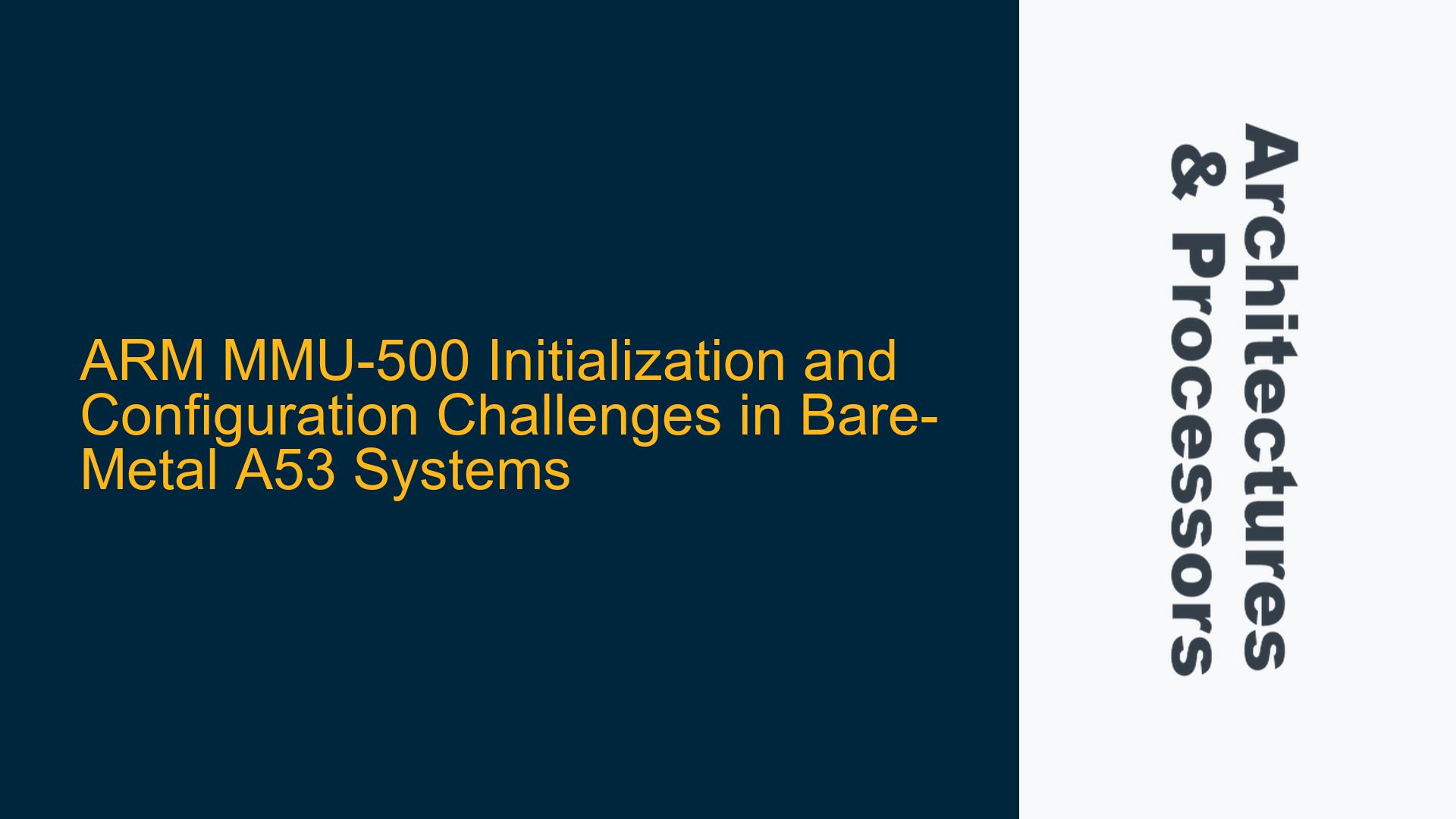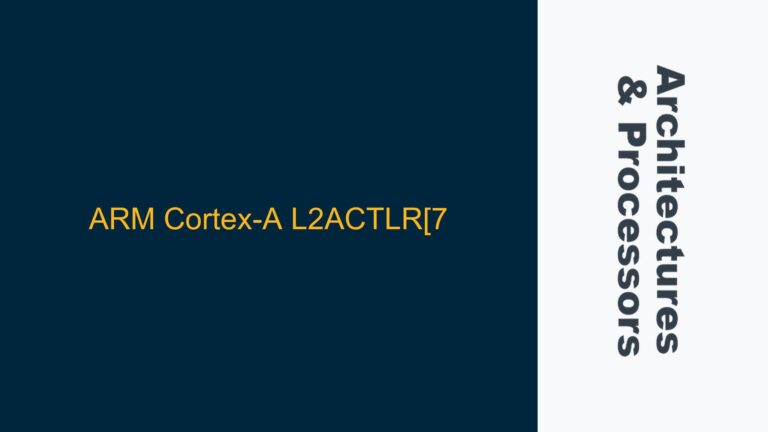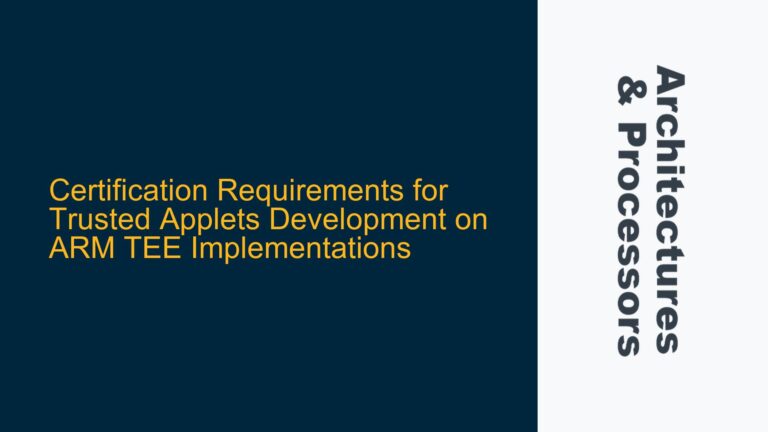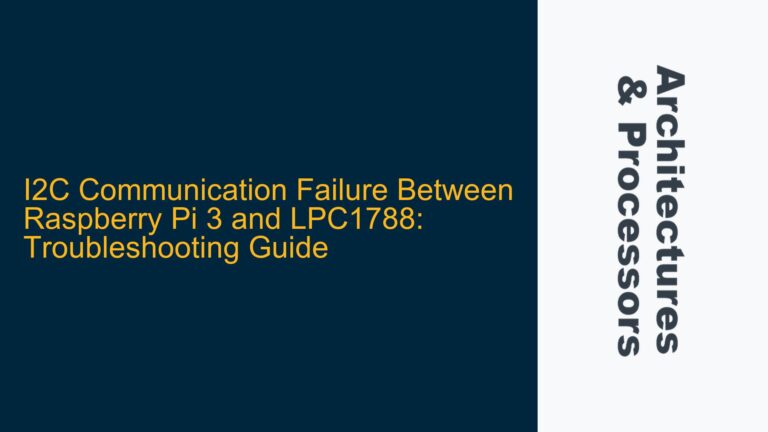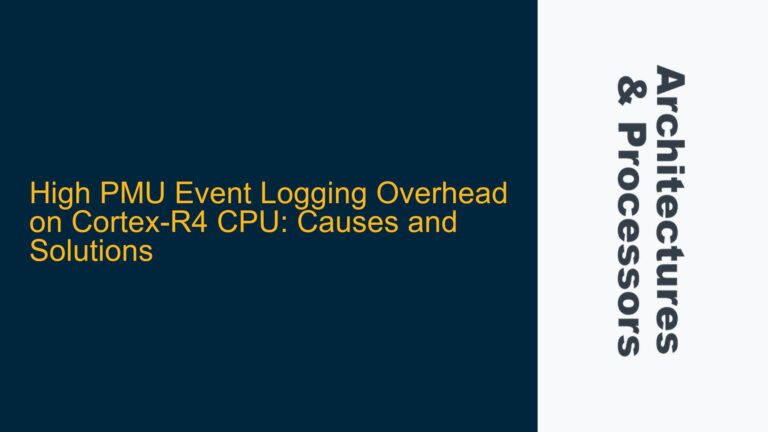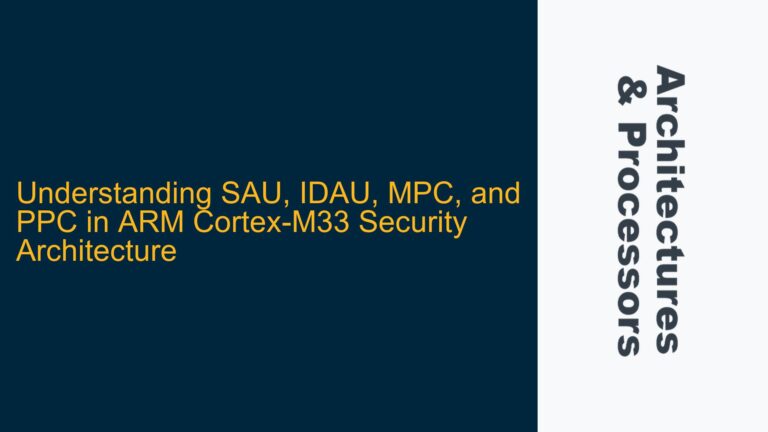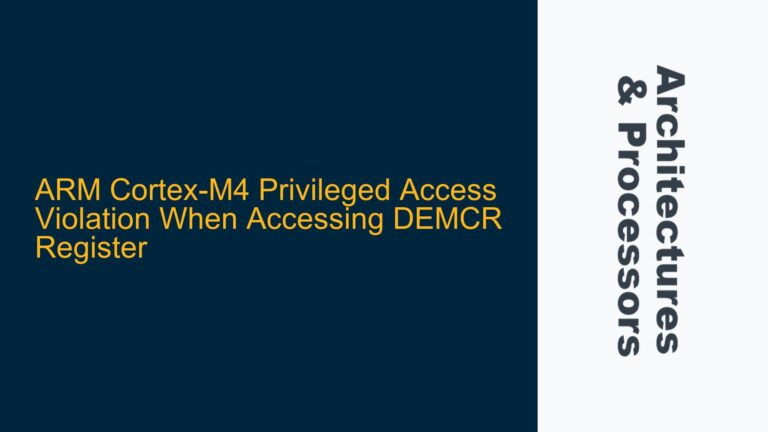ARM MMU-500 Initialization and Configuration in Bare-Metal Environments
The ARM MMU-500, also known as the System Memory Management Unit (SMMU), is a critical component in systems utilizing ARM Cortex-A53 processors, particularly in bare-metal environments where no operating system is present to abstract hardware interactions. The MMU-500 is responsible for managing memory translation, access permissions, and memory attributes for peripherals and system masters, ensuring secure and efficient memory access. However, initializing and configuring the MMU-500 in bare-metal systems can be challenging due to the lack of publicly available code samples and detailed documentation. This post delves into the intricacies of MMU-500 initialization, potential pitfalls, and solutions to ensure proper functionality.
MMU-500 Initialization Challenges in Bare-Metal A53 Systems
The primary challenge in configuring the MMU-500 in a bare-metal environment stems from the absence of comprehensive code samples in the publicly available documentation. The MMU-500 Technical Reference Manual (TRM) provides a high-level overview of the SMMU’s functionality but lacks detailed implementation examples. This gap is particularly problematic for developers working with ARM Cortex-A53 processors, as the MMU-500’s initialization process involves configuring complex data structures such as translation tables, stream tables, and context descriptors. Without clear guidance, developers may struggle to correctly set up these structures, leading to issues such as translation faults, incorrect memory attributes, or system instability.
Additionally, the MMU-500 TRM references a confidential supplement that contains detailed initialization procedures and code samples. This supplement is only available to ARM licensees, further complicating the situation for developers without access to this document. The lack of publicly available resources forces developers to rely on indirect references, such as the ARMv8 Architecture Reference Manual and the SMMUv2 TRM, which provide some insights into the translation table formats and processes but do not address the MMU-500 specifically.
Memory Translation Table Formats and Configuration Registers
The MMU-500’s translation table formats are compatible with those described in the ARMv8 Architecture Reference Manual for both AArch32 and AArch64 translation regimes. This compatibility implies that developers can leverage the ARMv8 documentation to understand the basic structure of translation tables. However, the MMU-500 introduces additional complexities, such as support for two-stage translation and extended attributes, which are not fully covered in the ARMv8 manual.
The MMU-500’s translation tables are hierarchical, similar to those used by the processor’s MMU, but they include additional fields specific to the SMMU. For example, the Stage 1 translation tables for the MMU-500 include fields for memory attributes, access permissions, and translation table base addresses. These tables must be carefully configured to ensure that the SMMU correctly translates addresses and enforces access controls.
In addition to translation tables, the MMU-500 requires the configuration of several key registers, including the SMMU_CR0 (Control Register 0) and SMMU_CR1 (Control Register 1). These registers control global settings such as the SMMU’s enable state, translation table walk coherency, and interrupt handling. Misconfiguring these registers can result in the SMMU failing to translate addresses or generate unexpected faults.
Implementing MMU-500 Initialization and Debugging Common Issues
To successfully initialize the MMU-500 in a bare-metal environment, developers must follow a structured approach that includes configuring translation tables, setting up stream and context descriptors, and enabling the SMMU. Below is a detailed guide to implementing MMU-500 initialization and addressing common issues:
Step 1: Configure Translation Tables
The first step in initializing the MMU-500 is to set up the translation tables. These tables define the mapping between input addresses (from peripherals or system masters) and output addresses (in system memory). The tables must be aligned to their respective granule sizes (e.g., 4 KB, 64 KB) and populated with valid descriptors.
For Stage 1 translation, the tables must include fields for memory attributes (e.g., cacheability, shareability) and access permissions (e.g., read/write, privileged/unprivileged). Developers should refer to the ARMv8 Architecture Reference Manual for the exact format of these descriptors, as the MMU-500 uses compatible formats.
Step 2: Set Up Stream and Context Descriptors
The MMU-500 uses stream tables to associate each peripheral or system master with a context descriptor. The context descriptor contains the base address of the translation tables and other configuration settings for the associated stream. Developers must ensure that the stream table is correctly populated and that each context descriptor points to a valid set of translation tables.
A common issue during this step is misalignment of the stream table or context descriptors. The MMU-500 requires these structures to be aligned to specific boundaries, and failure to meet these requirements can result in the SMMU being unable to locate the descriptors.
Step 3: Enable the MMU-500
Once the translation tables, stream table, and context descriptors are configured, developers can enable the MMU-500 by setting the appropriate bits in the SMMU_CR0 and SMMU_CR1 registers. It is crucial to ensure that the SMMU is enabled only after all configuration steps are complete, as enabling it prematurely can lead to translation faults or incorrect memory access.
Debugging Common Issues
During MMU-500 initialization, developers may encounter issues such as translation faults, incorrect memory attributes, or system instability. These issues can often be traced to misconfigured translation tables, stream tables, or context descriptors. To debug these issues, developers should:
- Verify the alignment and contents of the translation tables, ensuring that all descriptors are valid and correctly formatted.
- Check the stream table and context descriptors for alignment issues or incorrect pointers.
- Use the MMU-500’s fault registers (e.g., SMMU_FAR, SMMU_FSR) to identify the cause of translation faults.
- Ensure that the SMMU_CR0 and SMMU_CR1 registers are correctly configured before enabling the SMMU.
By following these steps and carefully reviewing the ARMv8 Architecture Reference Manual and SMMUv2 TRM, developers can successfully initialize and configure the MMU-500 in bare-metal environments. While the lack of publicly available code samples presents a challenge, a thorough understanding of the underlying architecture and careful attention to detail can overcome these obstacles.
